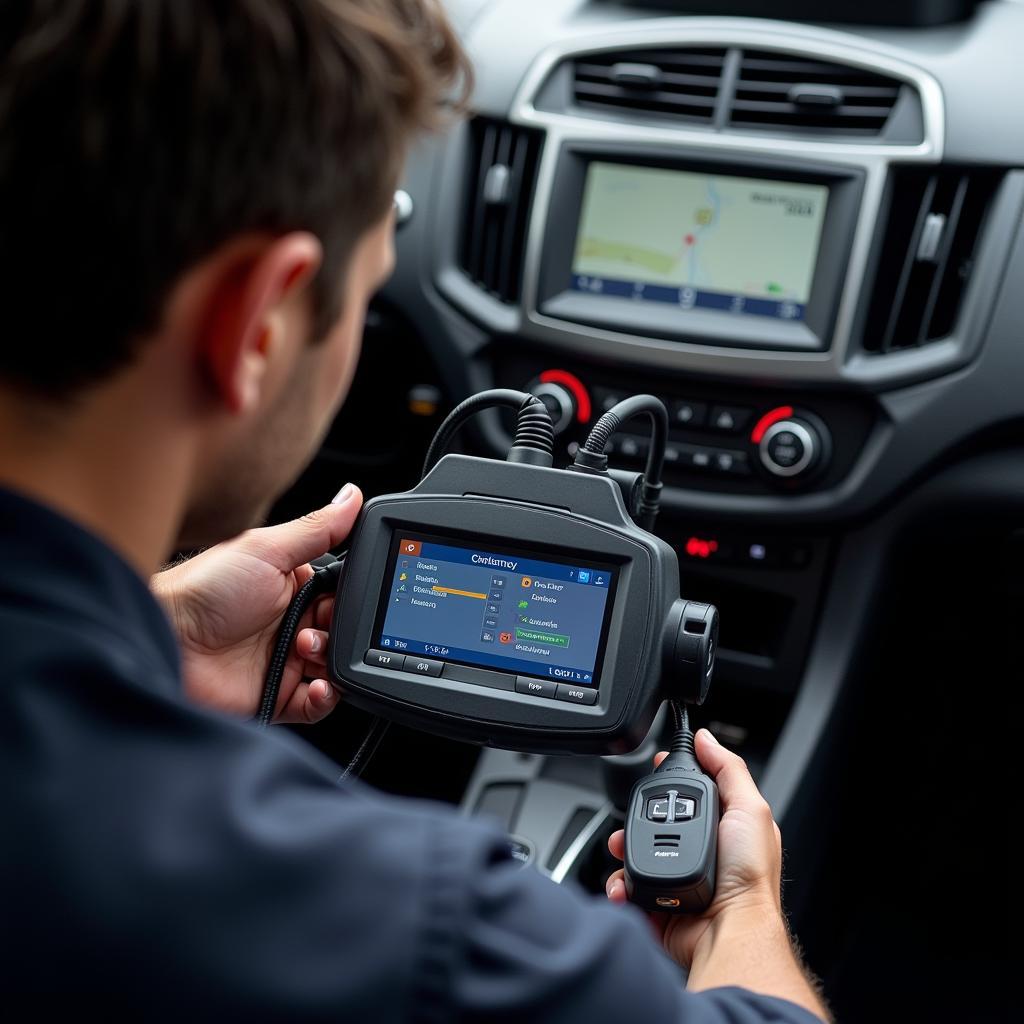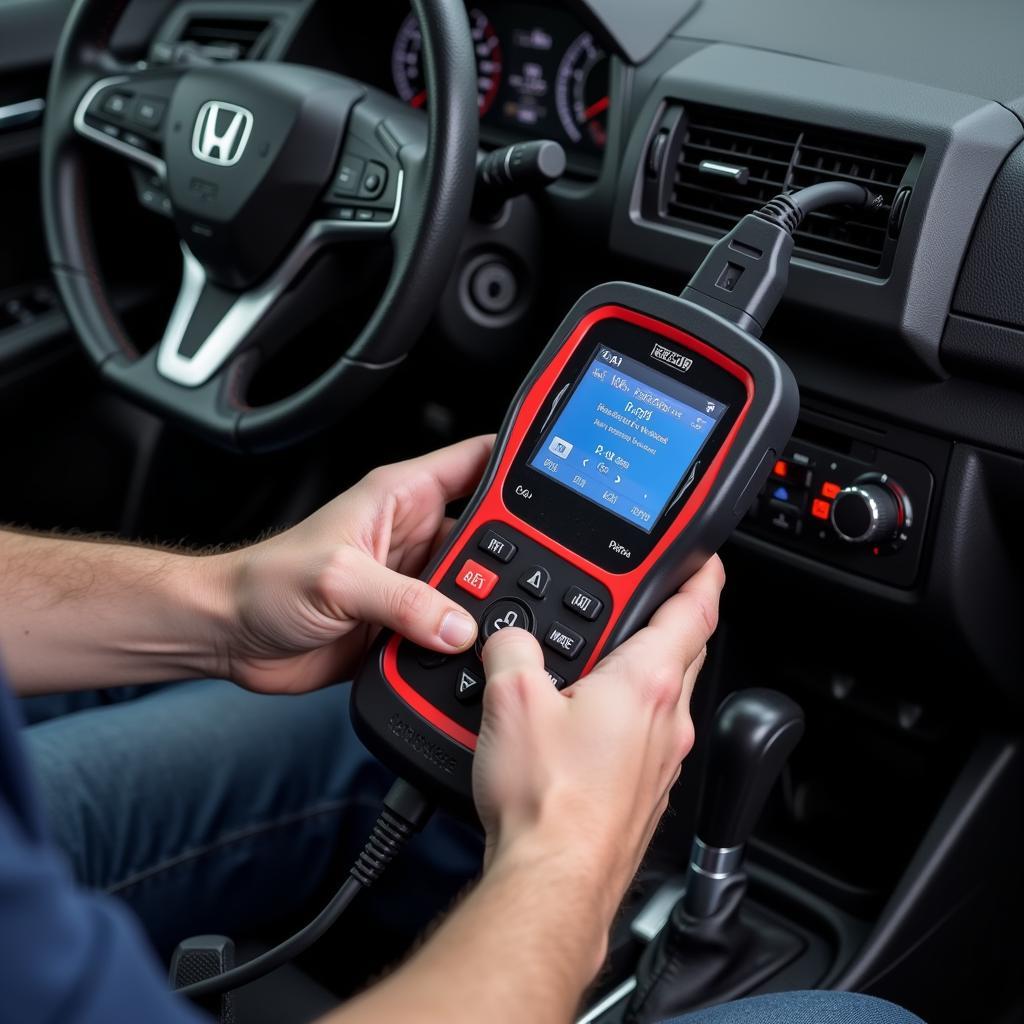Navigating the world of inflammatory bowel disease (IBD) can feel overwhelming, especially when it comes to diagnosis. Thankfully, medical advancements have led to sophisticated Inflammatory Bowel Disease Diagnostic Tools that help healthcare professionals accurately identify and differentiate between Crohn’s disease and ulcerative colitis, the two main types of IBD. This comprehensive guide explores the various diagnostic tools used, shedding light on their procedures, benefits, and limitations.
Understanding Inflammatory Bowel Disease
IBD is a group of chronic conditions characterized by inflammation in the digestive tract. This inflammation disrupts the normal functioning of the bowels, leading to a range of symptoms such as:
- Abdominal pain and cramping
- Persistent diarrhea
- Rectal bleeding
- Weight loss
- Fatigue
While the exact causes of IBD remain unclear, factors like genetics, immune system malfunction, and environmental triggers are believed to play significant roles.
The Importance of Accurate Diagnosis
Diagnosing IBD accurately is crucial for effective management and treatment. Differentiating between Crohn’s disease and ulcerative colitis is particularly important, as each condition requires a specific treatment approach. Accurate diagnosis helps healthcare providers:
- Determine the location and extent of inflammation
- Assess disease severity
- Rule out other conditions with similar symptoms
- Develop a personalized treatment plan
Inflammatory Bowel Disease Diagnostic Tools
A combination of tests is usually employed to diagnose IBD, as no single test is definitive. Here are some of the common inflammatory bowel disease diagnostic tools:
1. Medical History and Physical Exam
The diagnostic journey typically begins with a thorough review of the patient’s medical history, including:
- Current symptoms
- Family history of IBD
- Past medical conditions
- Medications
This is followed by a physical exam, where the doctor assesses the patient’s overall health, checks for abdominal tenderness, and examines the rectal area.
2. Blood Tests
Blood tests are often the initial step in IBD investigation. While they can’t diagnose IBD definitively, they can help rule out other conditions and provide insights into the severity of inflammation. Key blood tests include:
- Complete Blood Count (CBC): This test measures different components of the blood, such as red blood cells, white blood cells, and platelets. Abnormalities like anemia or elevated white blood cell count may indicate inflammation.
- C-Reactive Protein (CRP) and Erythrocyte Sedimentation Rate (ESR): These are markers of inflammation in the body. Elevated levels suggest active inflammation, although they don’t pinpoint the location.
3. Stool Tests
Examining stool samples can provide valuable information about the digestive tract. These tests can detect:
- Blood in stool (Fecal Occult Blood Test): This test helps identify hidden blood in the stool, which can be a sign of inflammation or bleeding in the digestive tract.
- Calprotectin (Fecal Calprotectin Test): Calprotectin is a protein released by white blood cells in response to inflammation. Elevated levels in the stool suggest active inflammation in the intestines.
4. Endoscopy
Endoscopy is a key diagnostic tool that allows doctors to directly visualize the lining of the digestive tract. There are two main types:
- Colonoscopy: This procedure involves inserting a thin, flexible tube with a camera attached (colonoscope) into the rectum to examine the entire colon.
- Sigmoidoscopy: Similar to a colonoscopy, but the scope is shorter and only examines the rectum and the lower part of the colon (sigmoid colon).
During endoscopy, biopsies (small tissue samples) can be taken for microscopic examination, which helps confirm the diagnosis and determine the type of IBD.
5. Imaging Tests
Imaging tests help visualize the digestive tract and identify areas of inflammation or other abnormalities. Commonly used imaging tests include:
- X-ray: X-rays can show blockages, perforations, or severe inflammation.
- CT Scan: A CT scan provides more detailed images of the digestive tract and surrounding structures.
- MRI: MRI is particularly useful for visualizing the small intestine and assessing inflammation or complications like fistulas or abscesses.
- Capsule Endoscopy: This involves swallowing a small capsule containing a camera. As the capsule travels through the digestive tract, it captures images that are transmitted to a recording device. This is especially useful for examining the small intestine, which is difficult to reach with traditional endoscopy.
The Role of Technology in IBD Diagnosis
Advancements in technology continue to improve IBD diagnosis:
- Artificial Intelligence (AI): AI algorithms are being developed to analyze endoscopic images and identify subtle abnormalities, potentially improving the accuracy and efficiency of diagnosis.
- Biomarkers: Research is ongoing to identify specific biomarkers in blood or stool samples that can aid in early diagnosis and predict disease course.
Living with IBD: Support and Resources
Receiving an IBD diagnosis can be challenging, but with the right support and resources, individuals can live full and active lives.
- Healthcare Professionals: Your healthcare team is your primary source of information and support. Don’t hesitate to ask questions, voice concerns, and discuss treatment options.
- Support Groups: Connecting with others who understand your journey can be immensely helpful.
- Online Resources: Reputable organizations like the Crohn’s & Colitis Foundation provide valuable information, resources, and support for individuals living with IBD.
Conclusion
Inflammatory bowel disease diagnostic tools have advanced significantly, allowing for more accurate and timely diagnosis. From blood tests and stool analyses to advanced imaging techniques and the evolving field of biomarkers, these tools are essential in helping healthcare providers understand, manage, and treat IBD effectively. Early diagnosis and personalized treatment plans are key to improving quality of life for individuals living with IBD.
If you suspect you may have IBD or are experiencing related symptoms, it’s important to seek medical attention promptly. For expert advice and support on inflammatory bowel disease diagnostic tools, contact ScanToolUS at +1 (641) 206-8880 or visit our office at 1615 S Laramie Ave, Cicero, IL 60804, USA.
Frequently Asked Questions (FAQs)
1. How long does it take to get an IBD diagnosis?
The diagnostic process can vary in length depending on individual factors and the complexity of the case. It may involve multiple appointments, tests, and consultations with specialists.
2. Are inflammatory bowel disease diagnostic tools painful?
While some tests, like blood draws, may cause minimal discomfort, procedures like endoscopy are typically performed under sedation to minimize discomfort.
3. Can IBD be cured?
Currently, there’s no cure for IBD. However, with appropriate treatment and management, individuals can experience long periods of remission and maintain a good quality of life.
4. What are the long-term complications of IBD?
Untreated or poorly managed IBD can lead to complications such as bowel obstruction, fistulas, abscesses, malnutrition, and an increased risk of certain cancers.
5. What lifestyle changes can help manage IBD symptoms?
Eating a balanced diet, managing stress, getting regular exercise, and avoiding trigger foods can help manage IBD symptoms. Your healthcare provider can provide personalized recommendations.



